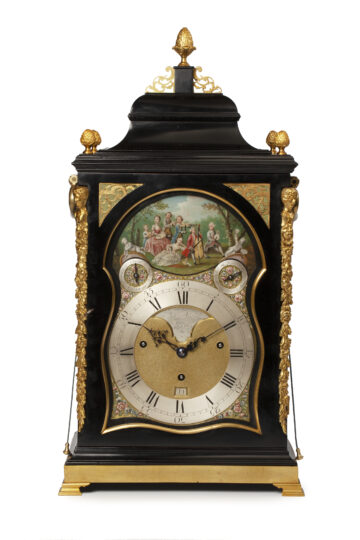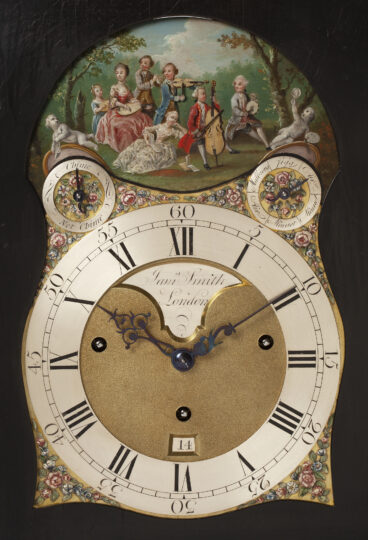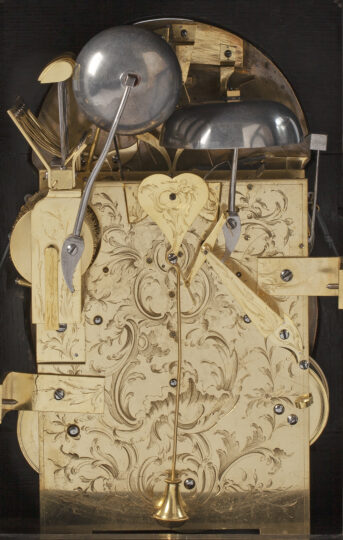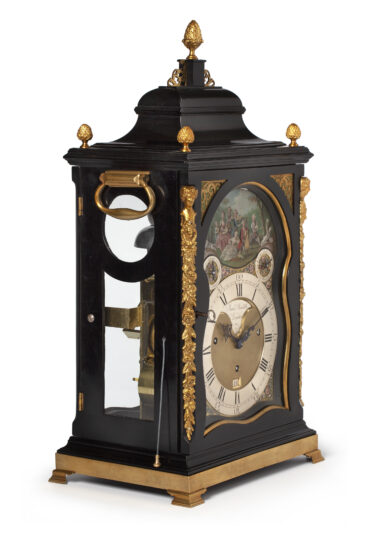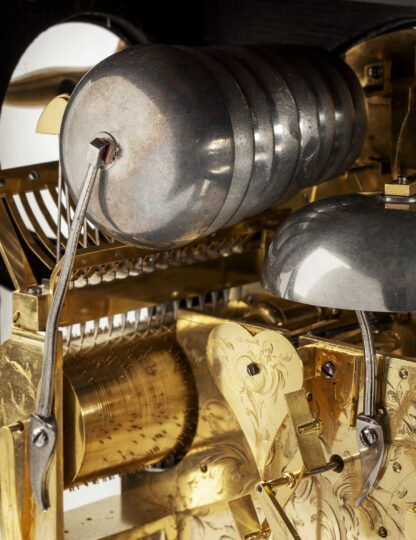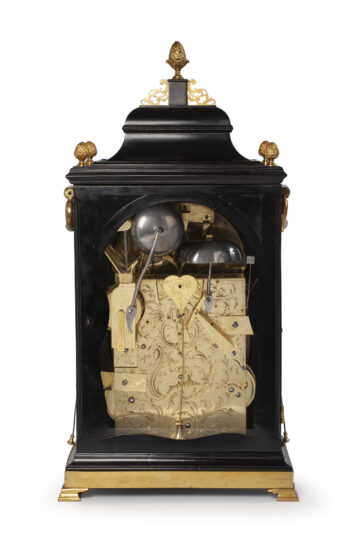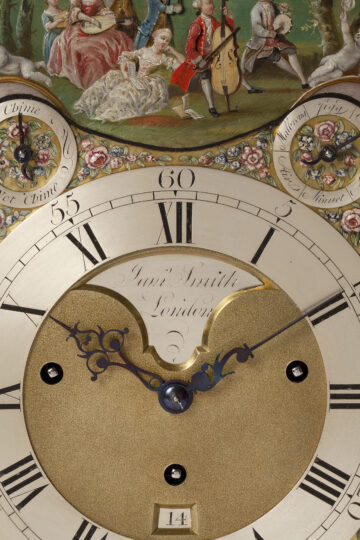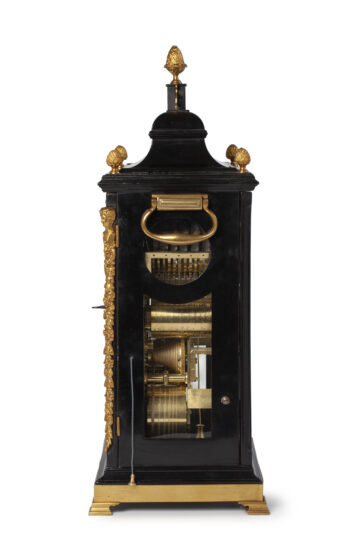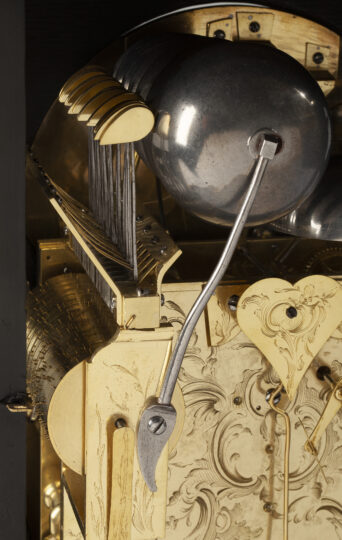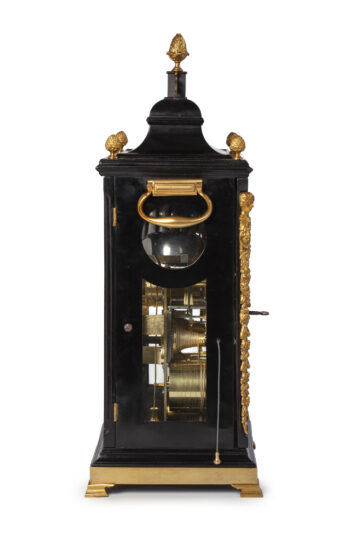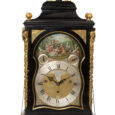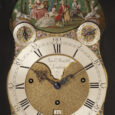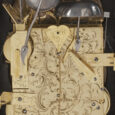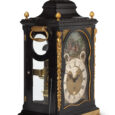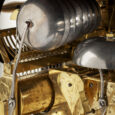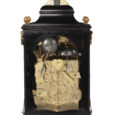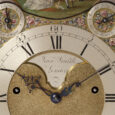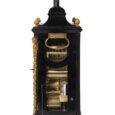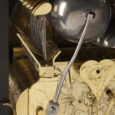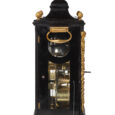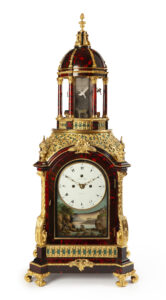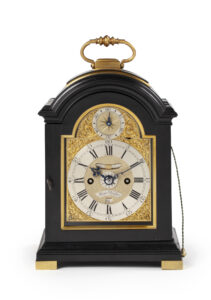ENGLISH MUSICAL AUTOMATON BRACKET CLOCK Jam.s Smith London Ca. 1765
M&R33
MUSICAL AUTOMATON BRACKET CLOCK
Signed: Jam.s Smith London
Circa 1765
England
Movement
The spring-driven triple fusee brass movement consists of going, striking and musical trains, as well as an automaton. The going train has a verge escapement with a short pendulum with knife-edge suspension. The musical train has a cylinder at right angles on the plates, with 15 hammers on eight bells. It plays one of six tunes on the hour, followed by activating the striking sounding the hours on a large bell. The striking can be repeated at will by pulling a cord on the left-hand side of the case, while the musical train can be activated by pulling a cord of the right-hand side. There is also an option to switch off the musical train (chime/not chime) on a secondary dial in the left top corner of the dial. The backplate is elaborately engraved depicting scroll and leaf motifs.
Dial
The arched, slightly waisted brass dial has a silvered Roman dial, with Arabic five-minute and minute divisions. The time is indicated by a fine pair of pierced blued steel hands. There is an date aperture above the VI, while below the XII there is a recessed silvered signature plaque: Jam.s Smith London. In the top corners are two secondary rings, the left one to switch off the musical train (chime/not chime), the one of the right for selecting one of the six tunes, each with a blued steel hand-shaped handle. Around and in the centres are painted roses. There is a painted automaton mechanism in the arch, depicting a musical company and a few figures around them. The right arms of the four musicians move across their instrument, driven by the movement.
Case
The ebonised pearwood veneered bell-top oak case of this Engelish bracket clock has a glazed brass lined arched and slightly waisted door. In the top corners are pierced brass sound frets. There are two glazed windows to the sides so that the movement is almost entirely visible. The case is surmounted by four pineapple finials on the corners, a similar slightly larger one embellishing the bell top. The chamfered corners have cast brass caryatids, while the base is brass clad and the whole rests on four brass bracket feet.
Duration: 1 week
Height: 56 cm.
Width: 29 cm.
Depth: 21 cm.
Literature
Brian Loomes, Watchmakers & Clockmakers of the World, London, 2006, p. 719.
The maker
There are several makers with the name James Smith that were active in eighteenth century London so it is hard to tell which James this is.

